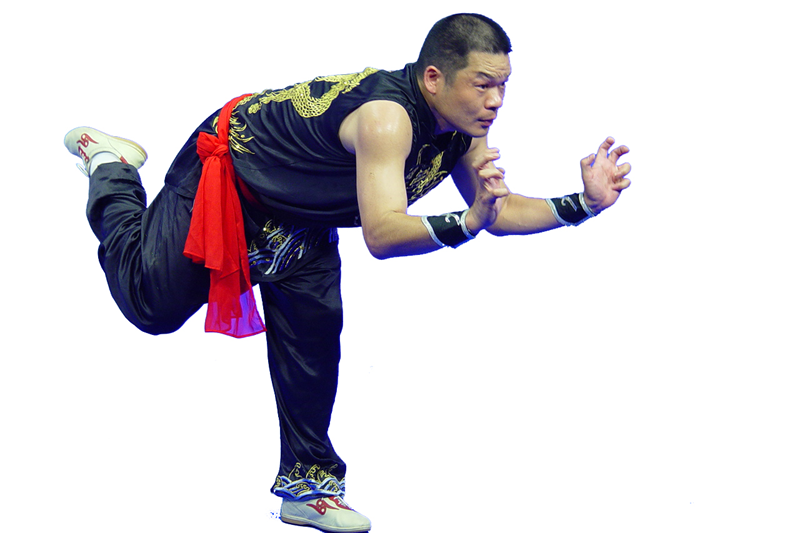
The Dishu fist motion. [Photo/fujian-szwhg.chaoxing.com]
Dishu fist is a rare traditional martial art form in southern China, commonly referred to as "dog boxing". It is popular in regions such as Fuzhou, Quanzhou, Nanping, and Ningde in Fujian province, as well as in Hong Kong and Southeast Asia. It has been recognized as a national intangible cultural heritage representative item in the traditional sports and games category.
Legend has it that during the late Ming (1368-1644) and early Qing (1644-1911) dynasties, the martial art form was founded by a nun and has been passed down through six generations. Dishu fist is a unique martial art style that imitates the agility, fierceness, and cleverness of dogs, incorporating distinct techniques. It combines the swift and fierce hand techniques of southern Shaolin boxing with the flexible and varied leg techniques of northern Shaolin boxing.
Structured into eight sets of unarmed routines, two sets of paired routines, and five sections on weapon techniques, Dishu fist not only holds practical value in self-defense but also serves as an effective method for physical fitness and enhancing resilience, strengthening one's ability to protect oneself in accidental falls.
As a primary martial art form within southern Shaolin, Dishu fist actively participates in martial arts exchanges and discussions. The Fujian Wushu Association to Arcane Boxing was established in 2002, initiating efforts to organize historical data, techniques, and routines. However, due to the advanced age of many skilled practitioners and a limited number of new learners, this rare martial art form might become a lost art in the future.

Copyright © General Office of Fujian Provincial People's Government
Website Identification Code 3500000049Registration Number: 15003084
All rights reserved. The content (including but not limited to text, photo, multimedia information, etc) published in this site belongs to fujian.gov.cn.
Without written authorization from fujian.gov.cn, such content shall not be republished or used in any form.